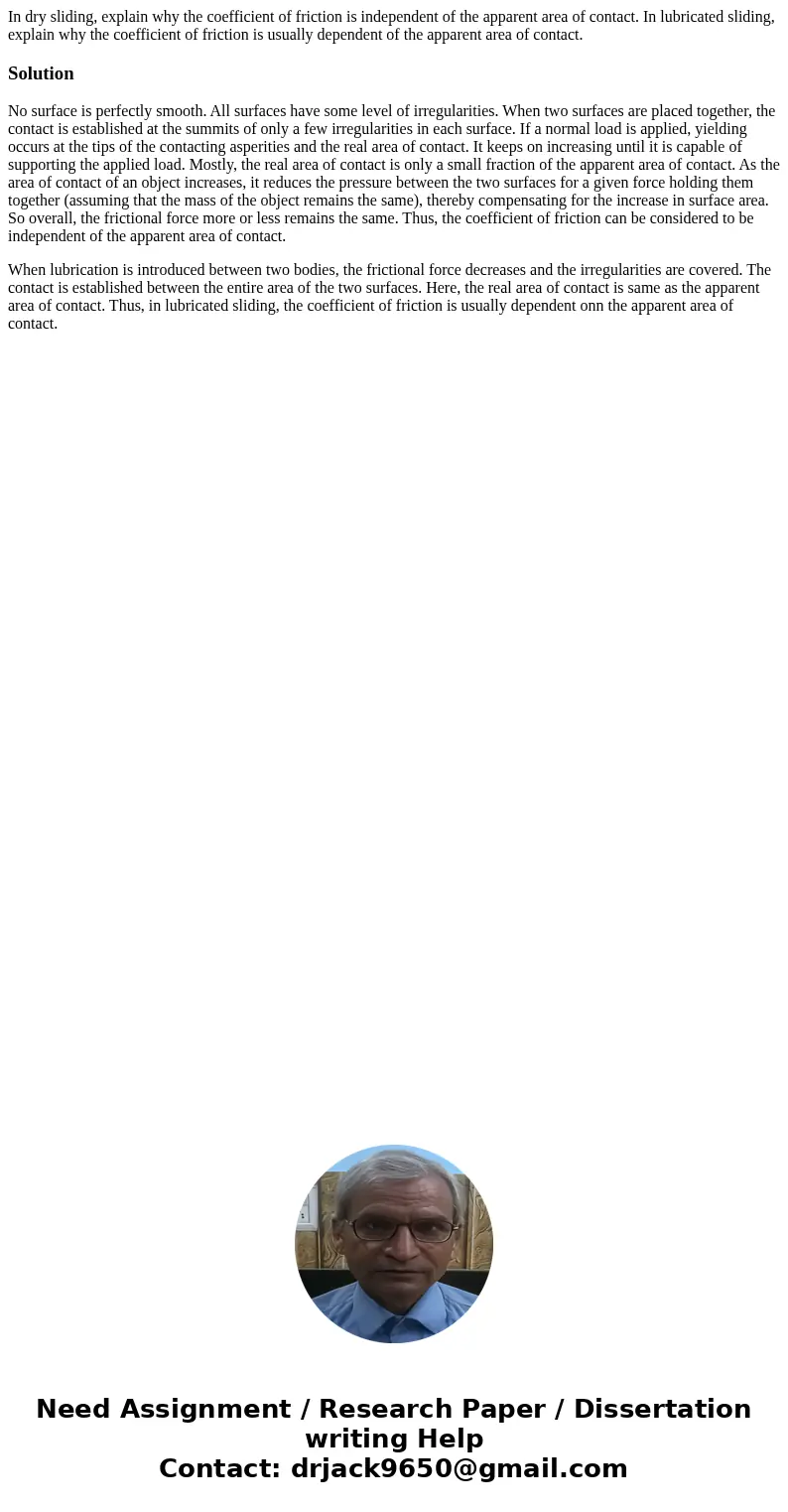In dry sliding explain why the coefficient of friction is in
In dry sliding, explain why the coefficient of friction is independent of the apparent area of contact. In lubricated sliding, explain why the coefficient of friction is usually dependent of the apparent area of contact.
Solution
No surface is perfectly smooth. All surfaces have some level of irregularities. When two surfaces are placed together, the contact is established at the summits of only a few irregularities in each surface. If a normal load is applied, yielding occurs at the tips of the contacting asperities and the real area of contact. It keeps on increasing until it is capable of supporting the applied load. Mostly, the real area of contact is only a small fraction of the apparent area of contact. As the area of contact of an object increases, it reduces the pressure between the two surfaces for a given force holding them together (assuming that the mass of the object remains the same), thereby compensating for the increase in surface area. So overall, the frictional force more or less remains the same. Thus, the coefficient of friction can be considered to be independent of the apparent area of contact.
When lubrication is introduced between two bodies, the frictional force decreases and the irregularities are covered. The contact is established between the entire area of the two surfaces. Here, the real area of contact is same as the apparent area of contact. Thus, in lubricated sliding, the coefficient of friction is usually dependent onn the apparent area of contact.

 Homework Sourse
Homework Sourse